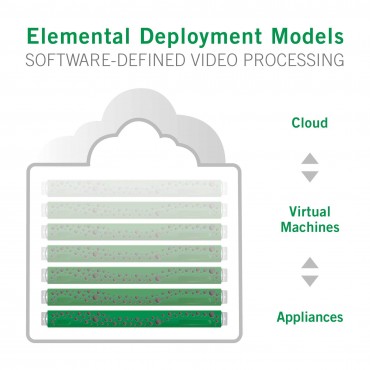NEW YORK, Nov. 14 (Korea Bizwire) — Established software companies in mature markets now face true competition, as well as partnership opportunities, in markets across the globe. But how do they survey the landscape for threats and opportunities?
An infographic accompanying this announcement is available at http://www.globenewswire.com/NewsRoom/AttachmentNg/3aec6a46-7a49-4b3f-97c6-bbaafae4211c
PwC’s new ranking, Emerging Markets Top 30 Software Companies, identifies intriguing characteristics, common advantages and disadvantages, and signs for success among software companies based in emerging markets. Through the research, conducted with International Data Corp., PwC developed a snapshot of how successful software companies in emerging markets gain traction—growing from regional vendors into global players.
To view the complete list and read PwC’s analysis, click here.
“Most of the companies in our ranking have built their businesses on regional strengths and local needs—for instance, security software in Eastern Europe and ERP software in Asia,” said Raman Chitkara, PwC’s Global Technology Industry Leader. “It remains clear, however, that major software vendors in the developed world will maintain influence and power.”
Bolstering this point, the 30 companies on PwC’s list represent a mere 1.4% of global software industry revenues, and have revenues equal to 1.9% of the Global 100 Software Leaders revenues.
Characteristics of emerging-market software vendors
Most of the companies on our list are more than 10 years old and they’ve been working toward this success for a while. They’ve achieved it through cost advantages, and by tapping regional strengths. They’ve done it the way companies have become successful for years—they started small and became incrementally bigger and stronger.
Two-thirds of the Emerging Markets Top 30 Software Companies are located in Asia; China alone comprises more than 40% of the total (13). Eastern Europe, including Russia, represents almost a third with nine companies, and Brazil has one company on the list.
Dominating the ranking, Asia-Pacific is characterised by the dual advantage of low-cost developers and an expanding market. This region not only focuses strongly on technology, but it also has the ability to leapfrog legacy technologies. Given the prevalence of manufacturing in Asia, it stands to reason that most Chinese companies on the list develop software relating to manufacturing or logistics.
A specialised grounding in the intricacies of each local market is a critical element of success. This is a core part of the foundation that ultimately enables these companies to go global.
“Successful companies recognise the value of localisation,” said Mark Jansen, PwC Singapore’s Technology, Media and Telecommunications (TMT) Leader. “This is especially important in Asia, where mobile technology enablement is critical because some countries have almost four times the penetration of mobile Internet versus broadband.”[1]
Advantages of emerging-market companies
PwC’s research uncovered several core advantages among the Emerging Markets Top 30, and these are common across regions.
| Cost | Developer salaries are low in comparison to more mature economies. |
| Population | Emerging markets have high levels of tech-savvy millennials who are likely to adopt mobile applications quickly. |
| Proximity | Software vendors can establish a foothold by becoming invaluable in the local market and then expanding. |
| Education | Excellent educational systems (think math and science in Eastern Europe) help them tackle complex software, such as security. |
| Culture | Employees in many emerging-market countries are hard workers as they strive to improve their economic conditions. |
| Trailblazers | Entrepreneurs are inspired by existing successes: India’s Infosys, China’s Alibaba, South Korea’s Samsung. |
The strength of emerging markets in part derives from their burgeoning millennial populations, most of which feel more comfortable with mobile devices, and many of whom might never have owned a personal computer. These consumers represent significant market opportunities.
Foundational challenges within emerging markets
All is not rosy, however, as the advantages face counterweight disadvantages, and emerging-market software companies’ odds for success are not high, for several reasons. Although the Top 30 have proven their staying power, many must still answer whether they can effectively scale.
Given that developed countries tend to default to names they know and companies they trust, emerging-market companies may suffer from lack of visibility and brand awareness.
Other issues—largely economic and financial—can also plague these companies. Access to capital, ability to hold onto talent and lack of a meaningful global presence, are common challenges.
Looking forward in a changing world
As globalisation continues, we will begin to see a rationalisation of all these issues. It will be faster and cheaper for emerging-market companies to establish themselves. Led by trends across the Internet of Things, artificial intelligence and cloud computing, the software industry will witness new leaders emerging and the potential disruption of well-established players.
PwC’s Jansen notes that in five years, the software world is likely to witness significant changes. Winners will become prominent, regardless of their country of origin. Enterprises will continue to look for cheaper, more reliable software—sometimes even without it being rich with features. “As OEMs from developing countries become bigger global players, they will likely consider options their counterparts in the developed world may not have considered,” noted Jansen.
For more information and to download the Emerging Markets Top 30 Software Companies report, click here.
About PwC’s Emerging Markets Top 30 Software Companies and the Global 100 Software Leaders
The PwC Top 30 Emerging Markets Software Companies is based on corporate financial statements (GAAP-based where applicable), other public sources and estimates for privately held companies, as compiled for PwC by the Global Software Business Strategies Group at International Data Corporation.
The ranking is based on year-to-year growth rate in software revenue from 2013 to 2014, the most recent year for which complete data was available. Due to variances in fiscal years, the results were ‘calendarised’ for both years.
PwC recently launched the fourth edition of its Global 100 Software Leaders ranking since 2010. The current edition continues our tradition of monitoring and analysing the leading companies and trends in the industry. Our goal is to help our clients understand both the obvious and the underlying forces influencing the software industry.
The new PwC Global 100 Software Leaders list is based on corporate financial statements (GAAP-based where applicable), other public sources and estimates for privately held companies, as compiled for PwC by the Global Software Business Strategies Group at IDC. Learn more about the report’s methodology here.
About PwC
At PwC, our purpose is to build trust in society and solve important problems. We’re a network of firms in 157 countries with more than 223,000 people who are committed to delivering quality in assurance, advisory and tax services. Find out more and tell us what matters to you by visiting us at www.pwc.com.
©2016 PwC. All rights reserved. PwC refers to the PwC network and/or one or more of its member firms, each of which is a separate legal entity. Please see www.pwc.com/structure for further details.
[1] PwC Global entertainment and media outlook 2016-2020
Contact:
Nicholas Braude, PwC
Tel: (617) 530-5435
e-mail: nicholas.braude@pwc.com
Source: PwC via GLOBE NEWSWIRE








